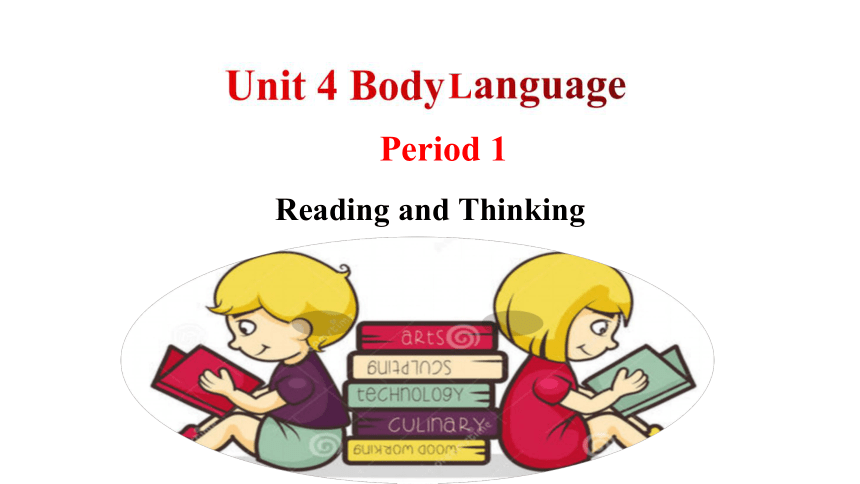(
课件网) Period 1 Reading and Thinking Learning aims 1. To get a general idea of body language. 2. To summarize and retell the main idea of the passage. 3. To understand the body language in different countries and use them correctly. Look at the following facial expressions, and try to tell us how they might be feeling. happy angry sad confused Leading-in Look at the following pictures. What do these gestures mean What are they trying to tell us OK! a little Nice to meet you! I give up. Pray/ Please! I’m listening carefully! Listening to how bodies talk Reading Comprehension Fast reading Task 1: Match the main idea of each part. (Para.1) (Para. 2~4) (Para. 5) (Para. 6) Some gestures seem to have the same meaning everywhere. Body language plays an important role in daily communication. Some body language has many different uses. Part 1. Part 2. Part 3. Part 4. Body language varies from culture to culture. Body Language/ Gesture Meaning Country/ Region Eye contact between men and women Looking down when talking to someone OK sign Demonstrate respect Japan Money Japan Zero France Not polite Brazil, Germany Careful reading Task 2: Read the text and fill in the table on page 39. Not polite Middle East Body Language/ Gesture Meaning Country/ Region Kissing on the cheek Placing your hands together and resting them on the side of your head while closing your eyes Moving your hand in circles over your stomach after a meal Friendly France, Russia Sleep Everywhere I am full Everywhere 1. How is the body language mentioned in the text interpreted in China 2. Can you think of an example of body language that is appropriate in China but might be misunderstood in another culture 3. What advice on body language can you give a foreign friend on his/her first trip to China Task 2: Read the text again, and then discuss these questions. People favour shaking hands, nodding the head when they meet someone else. In China, shaking one’s head means “no”, and nodding means “yes”. By comparison, in Bulgaria and southern Albania, the gestures have the opposite meaning. Please pay attention to the social distance,which is different in China and in the West. When we interact with other people,we use words as well as body language 1._____ (express) our thoughts and opinions.Important as words are,body language can also give us 2. (inform) about people’s feelings.However,body language means 3._____ (different) in different countries.Take “making eye contact” as 4._____ example.In some countries it is a way to display interest,5. in many Middle Eastern countries,men and women are not socially permitted to make eye contact.The gesture for “OK” 6. (vary) from culture to culture.In Japan,people might think it means money while in France,people may interpret it as meaning zero. Some gestures seem to have the same 7. (mean) everywhere.Placing your hands together and resting ... ...

